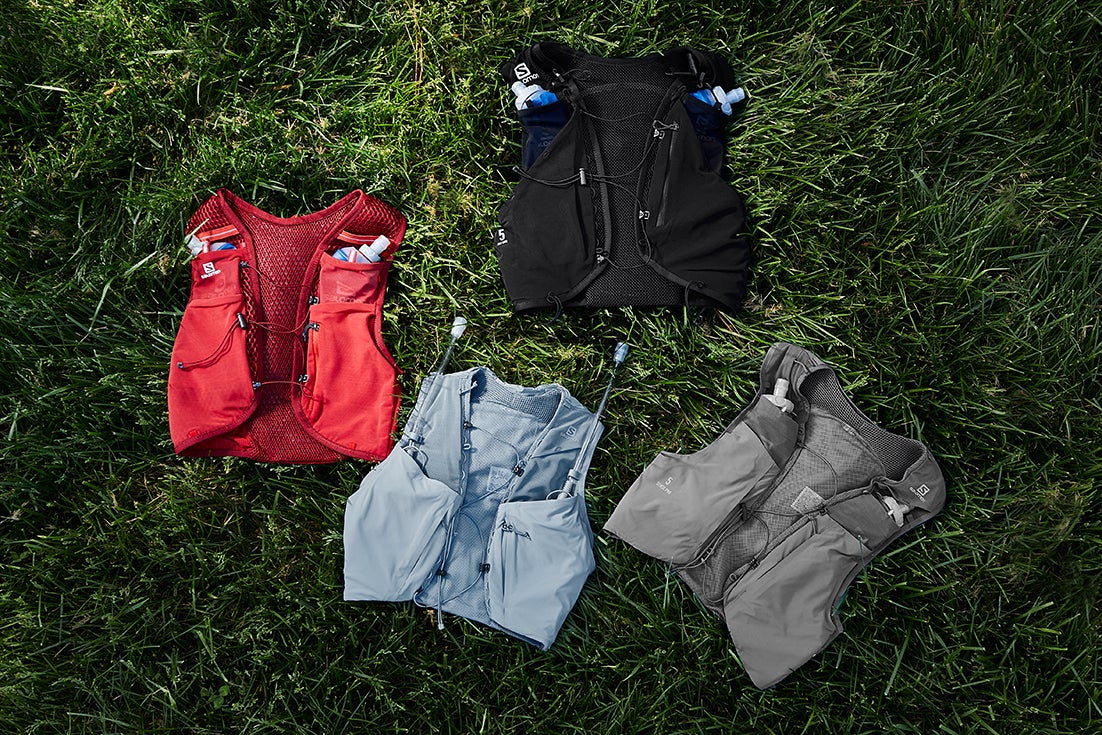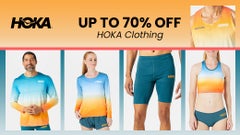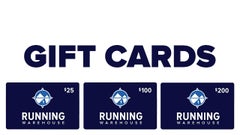How to Choose a Running Hydration Vest or Pack
Updated: February 5, 2024

What is a Running Vest?
Running Vests (also called hydration packs) have become a symbol of freedom among both road and trail runners, offering the ability to run outside for hours without the need to stop for water or supplies. Instead, you can keep all of your essentials within arm's reach and attached securely to your body, which prevents excessive bouncing or discomfort. While similar to hiking backpacks, running vests feature a more next-to-skin fit and vest-like design that helps to reduce the up-and-down bouncing movement of the pack when running. Equipped with easily accessible water bottles positioned on your sternum or a hose connected to a bladder strapped comfortably to your back, they not only quench your thirst but also allow for seamless hydration while running.
Benefits of Using a Running Hydration Vest
On top of providing easy access to hydration while on the run, running vests offer useful storage for carrying items as well. Need to refuel with energy gels and nutrition? Front pockets accommodate gels for a quick boost, while the rear compartments can store heartier snacks. And when unexpected weather strikes, these packs offer compartments to house lightweight jackets, gloves, and other necessities. No matter your running experience, choosing the best hydration pack for your needs can boost both comfort and safety on long runs. These vests will vary based on four key elements: fluid capacity, pack capacity, fit, and price range. In this article, we'll delve into the realm of running hydration packs, exploring their various features, benefits, and considerations for choosing the perfect pack for your running needs.
Step 1: Decide How Much Water You Want to Carry
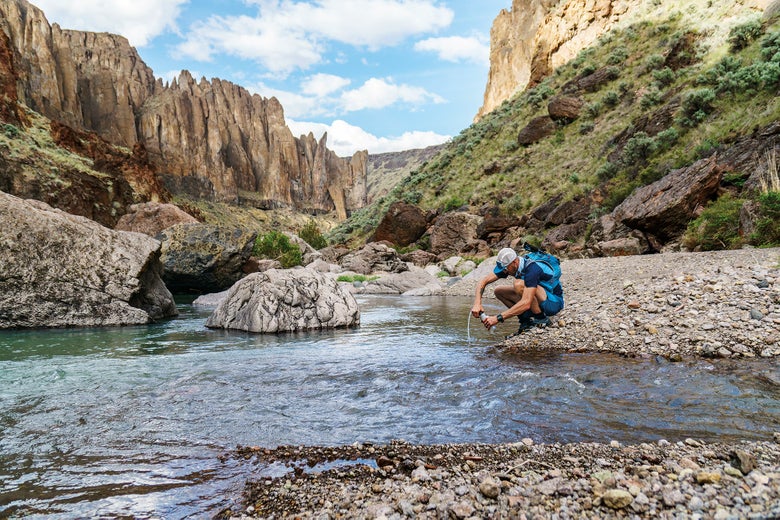
Fluid capacity, or the amount of water (or other hydration beverage) a pack can carry, is the main differentiating factor between vests. When referring to hydration capacity, we are specifically talking about the total amount of liquid a vest can hold using its included carrying containers. Often, packs will also be able to fit additional flasks, bottles, or reservoirs that can be purchased separately. The hydration capacity typically ranges from 20 ounces to 2 liters and is carried in bottles, flasks, or reservoirs.
Calculating Optimal Hydration for Your Journey
Understanding how much water to carry for different durations of runs or hikes is essential for a safe and enjoyable experience. The distance and intensity of your activity, weather conditions, and the availability of water sources all influence your hydration needs. For shorter runs or hikes, around 20 ounces of water might suffice, especially if you have access to water fountains or aid stations along the route. However, for longer endeavors, it's crucial to carry 1 to 2 liters of water to sustain yourself between potential refilling points. On the other hand, if you're venturing into areas with natural water sources like streams, carrying a filtration system can reduce the amount of water you need to carry initially. A portable filter enables you to purify water on the go, allowing you to stay hydrated without lugging excessive weight.
Selecting the Right Hydration Containers: Reservoirs, Flasks, and Bottles
There are multiple different types of fluid storage containers offered in running vests. Understanding how much water you need to carry as well as your preferred method of drinking water during the run will help you choose the right pack for your needs.
1. Reservoirs: Efficient Hydration Systems
Reservoirs, often referred to as hydration bladders, are a popular choice for their high fluid capacity and ease of sipping while on the move. These flexible, bag-like containers are compatible with a hose and bite valve system, allowing for effortless sipping without interrupting your stride. Reservoirs are particularly advantageous for long-distance activities where consistent hydration is vital. They typically range from 1.5 to 3 liters in capacity, providing ample hydration without the need for frequent refills.
2. Soft Flasks: Compact and Quick Access
Soft flasks are more compact than reservoirs and fit snugly within pockets or compartments on your vest. They are ideal for quick sips of hydration, making them suitable for shorter runs or races. Flasks often come with bite valves or small spouts that allow you to drink without slowing down. While they offer a lower fluid capacity compared to reservoirs, flasks' convenience and lightweight nature make them a preferred choice for many athletes.
3. Bottles: Traditional and Flexible
Bottles are the classic choice for hydration, and many vests come with bottle pockets for easy access. They offer versatility in terms of the types of fluids you can carry, from water to electrolyte drinks. While bottles might require you to briefly stop or slow down to take a drink, their familiarity and ease of cleaning make them a reliable option.
Step 2: Choose the Type and Volume of Storage You Need

When it comes to running, especially on longer distances and in diverse terrains, having the right hydration pack or vest can significantly enhance your experience and performance. A crucial aspect of these accessories is pack capacity, the volume of goods they can accommodate. Depending on the distance and location of your run, you might require extra layers of clothing, nutrition products, sunglasses, a headlamp, gloves, headwear, trekking poles, etc. The more gear you need to carry with you, the more space you will need in your pack. It's also important to consider the types of pockets you prefer, whether you need a chest pocket capable of holding a phone, and if you prefer zipper closures or drawstrings.
Factors Influencing Pack Capacity
- Distance and Location: The distance and location of your run play a vital role in determining the amount of gear you need to carry. A short trail run may require only the basics, such as hydration and a small snack, while an ultra-distance race might require extra clothing layers, first-aid supplies, and additional nutrition.
- Weather Conditions: Unpredictable weather conditions can call for a variety of clothing and gear options. A sudden rainstorm might require a waterproof jacket, while hot and sunny weather might demand extra sun protection. Choose a pack with enough storage to fit all the gear needed for the weather conditions you expect to encounter.
- Duration: The length of your run directly impacts the amount of hydration and nutrition you need to bring along. For longer runs, you'll want to consider larger hydration reservoirs and more storage space for food.
When to Choose More Storage vs. Less
- Longer Distances: If you're running long distances, especially in remote areas, choose a pack with more storage to accommodate extra hydration, nutrition, and gear.
- Variable Weather: For runs in unpredictable weather, opt for larger storage to carry extra layers, rain gear, or sun protection.
- Exploration Runs: If you love exploring new trails or terrains, extra storage allows you to carry navigation tools, trekking poles, first-aid supplies, and other essentials for safety.
- Ultramarathons or Endurance Events: Events that span several hours or days require substantial storage for sustained hydration and nutrition.
- Everyday Training: For regular training runs, a pack with less storage might suffice, focusing mainly on hydration and a few essentials.
Step 3: Find the Right Fit
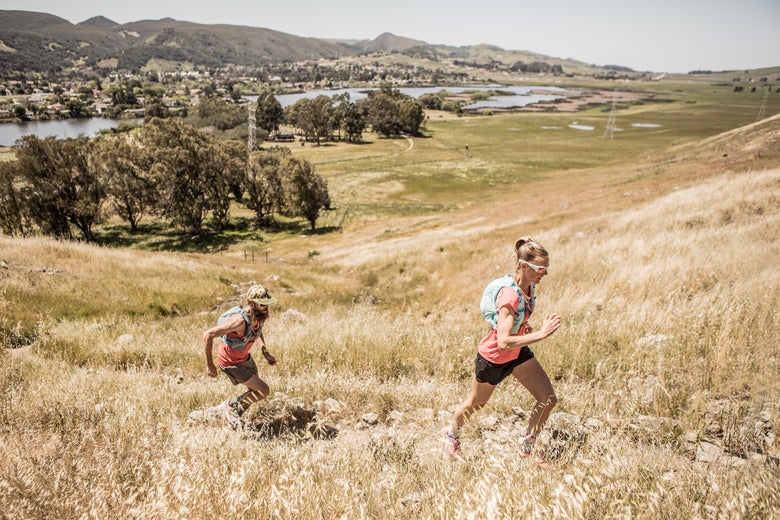
Fit is also an important factor when selecting the best pack for you. A hydration pack that fits well is more than just a matter of comfort; it's a performance enhancer. An improperly fitting pack might rub and chafe, causing skin irritation as well as soreness and all-around discomfort. Like any article of clothing, the fit of a hydration vest is personal, and you may find it worthwhile to compare a couple of choices before you pick your perfect pack.
How Should a Running Vest Fit?
- Snug Fit: A well-fitting hydration pack will hug your body snugly without constricting arm movement or breathing. Regardless of your pack design, make sure it sits securely so that it doesn't bounce or rub while you're running.
- No Rubbing: Pay attention to potential rubbing points. If any part of the pack consistently rubs against your skin, it might lead to discomfort during longer runs.
- Arm Mobility: A well-fitting pack should allow free arm movement. Straps that dig into your underarms or restrict your swing can lead to fatigue and hinder your natural running motion. Test the pack by moving your arms in a running motion. Your arms should move freely without any restriction or discomfort.
- Breathing: The pack shouldn't constrict your chest or restrict your breathing. Proper ventilation and a fit that accommodates deep breaths are essential for maintaining your endurance during long runs. Take deep breaths; the pack should expand and contract with your chest without restricting your lung capacity.
- Stability: Regardless of design, a properly fitting pack should stay securely in place without bouncing excessively. This stability prevents friction and rubbing against your skin. Jump or jog in place to test the stability. The pack should remain in place without excessive bouncing.
Sizing and Gender-Specific Packs
When deciding what size running vest you should get, it is also important to understand the different sizing options that are available. While some may be fine with a one-size-fits-all pack, those with larger shoulders, shorter torsos, or feminine bodies may benefit from specific pack sizing. Once you understand the sizing options, you can then use the desired pack's sizing charts to identify the best size for you.
- Universal Sizing: Some packs offer universal sizing, which means they are adjustable to fit a wide range of body shapes. While these packs provide versatility, they may not offer the tailored comfort of size-specific options.
- Size-Specific Packs: Many hydration packs come in different sizes, similar to clothing. These options provide a more precise fit, reducing the chances of discomfort caused by excess material or improper adjustment.
- Gender-Specific Packs: Some brands offer packs designed with gender-specific anatomical differences in mind. These packs consider chest and torso dimensions to provide a snug, supportive fit.
Step 4: Identify Your Desired Price Range

When seeking the ideal running hydration pack, understanding the price range can help you make a well-informed decision. Prices for hydration packs can vary greatly based on factors such as brand reputation, incorporated features, materials used, and overall capacity. It's important to find the right balance between your budget and the features that align with your running needs.
At the entry-level tier, hydration packs are designed to offer basic functionality for the casual runner. These packs often fall within the price range of $70 to $95, providing an affordable option for those who require hydration on the go without the need for extensive features.
Moving up to the mid-range options, you'll find hydration packs that strike a balance between quality, comfort, and storage capacity. These options are well-suited for regular training and come with a price range that typically spans from around $95 to $150. Within this range, you can expect to find packs that offer a more refined experience compared to entry-level options, catering to the needs of more committed runners.
For those who prioritize the utmost in performance, durability, and innovation, premium hydration packs are the way to go. These packs are crafted with advanced features, constructed from high-quality durable materials, and boast innovative designs. They cater to ultramarathoners, dedicated athletes, and those who demand the best of the best. The price range for premium hydration packs can extend beyond $150, reflecting the investment in top-tier performance and functionality.
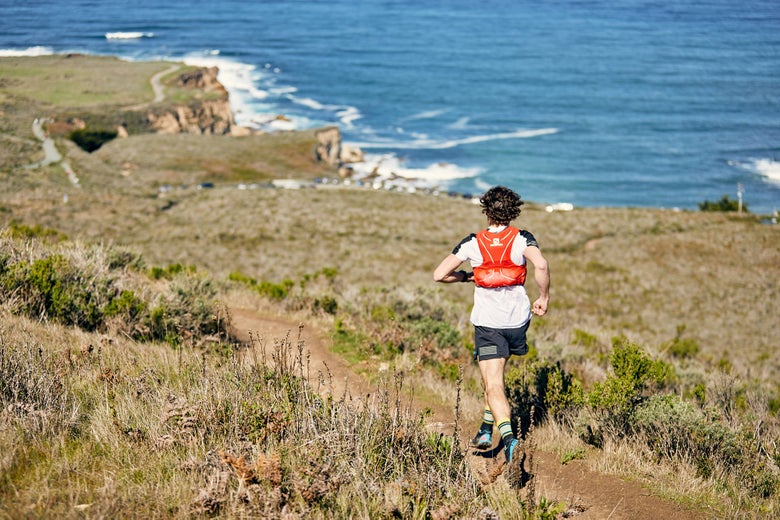
In conclusion, selecting the appropriate hydration pack for your running endeavors is a pivotal decision that significantly impacts the quality and success of your outdoor experiences. By considering the various factors discussed in this guide, such as capacity, fit, features, and price range, you can ensure that you remain well-hydrated and comfortable throughout your runs. A hydration pack tailored to your specific needs will not only prevent dehydration and its potential consequences but also enhance your overall enjoyment and performance during your adventures.

